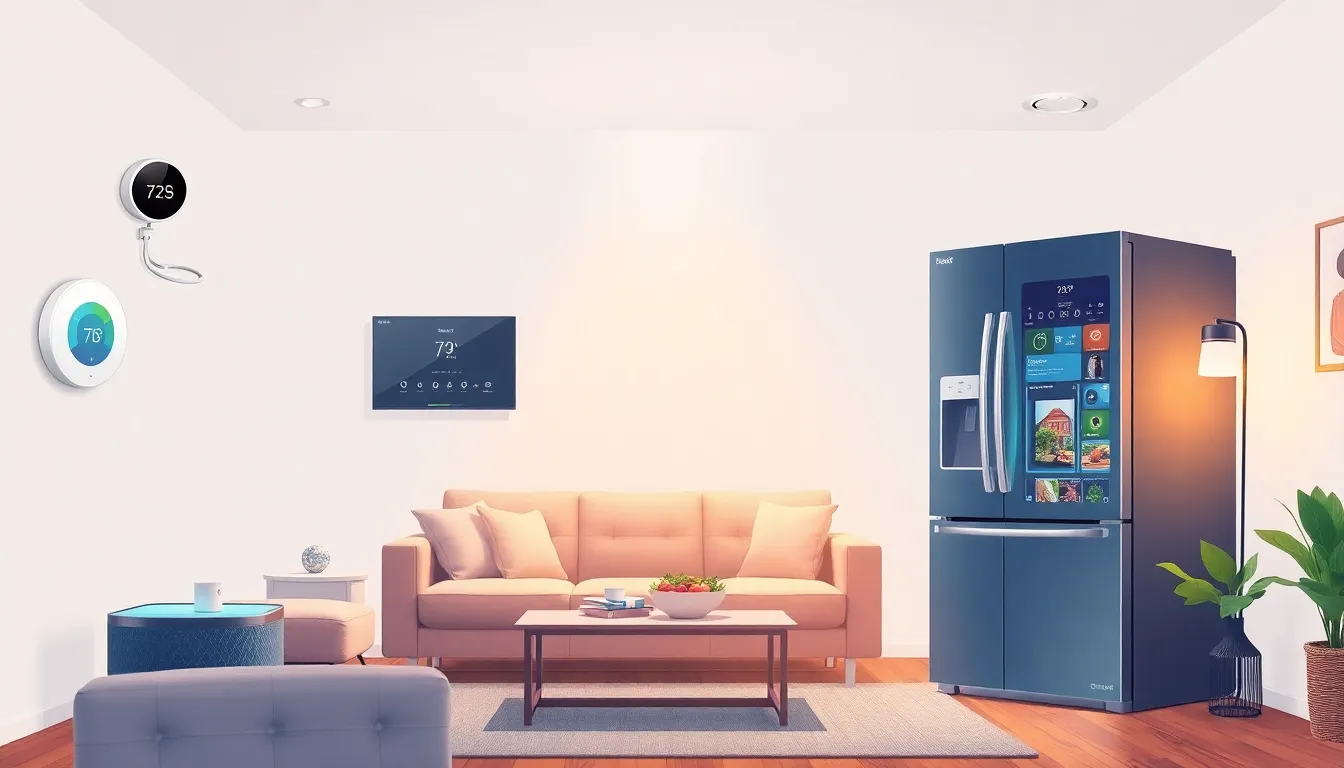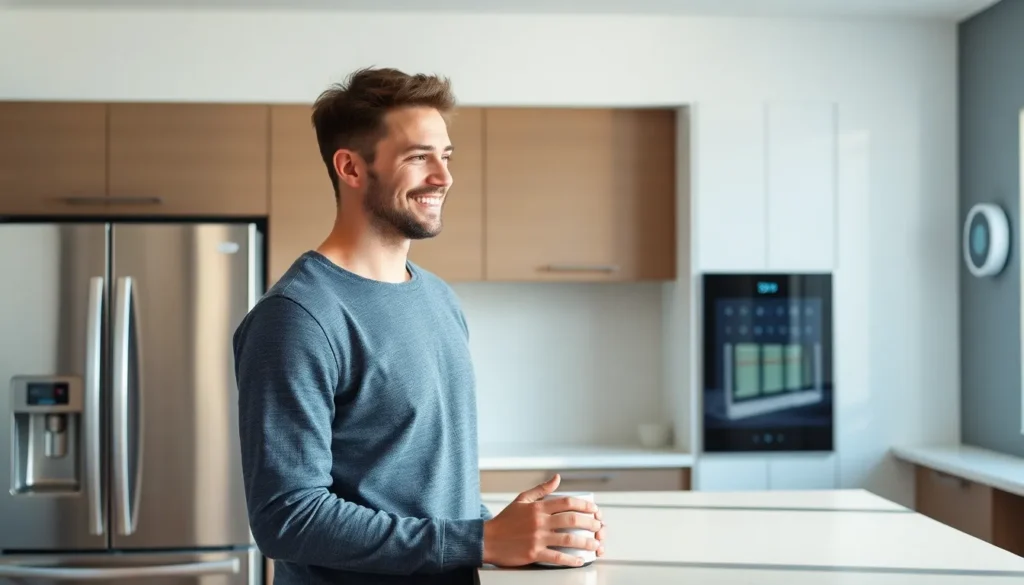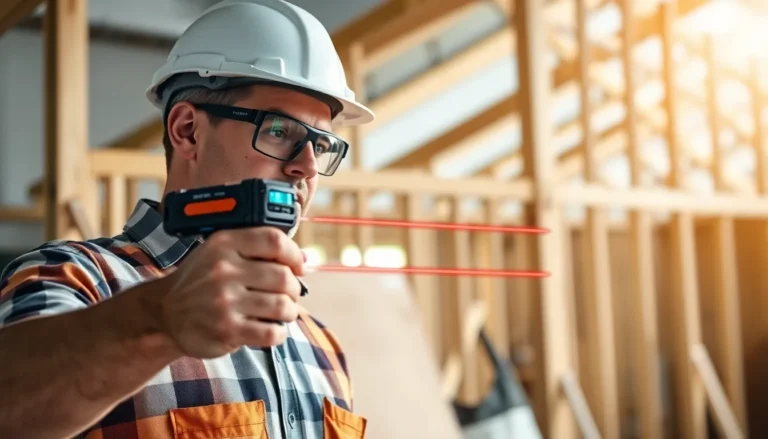Table of Contents
ToggleIn a world where even your toaster can chat with your fridge, the concept of a connected home has taken on a life of its own. Gone are the days of fumbling for light switches or manually adjusting the thermostat. Today’s homes are smart enough to anticipate needs, often before you even realize them.
Overview Of Connected Home Trends
Connected home technology continues to evolve rapidly. Smart home devices are now prevalent, enabling seamless communication among appliances. This interconnectedness simplifies daily living by anticipating user needs. For example, smart thermostats adjust temperatures based on occupancy patterns, increasing energy efficiency.
Many households are adopting voice-controlled assistants. Such technology allows users to manage devices through simple voice commands. Home security systems integrate with these assistants, providing real-time alerts and remote monitoring capabilities. Enhanced security features, like facial recognition and motion detection, increase homeowners’ peace of mind.
Another trend is the proliferation of smart appliances. Refrigerators now offer features like inventory tracking, which helps manage grocery lists effectively. Washing machines and dryers allow remote operation along with customizable cycles. This capability streamlines chores and saves time.
The growth of sustainable home technology is significant. Devices that monitor energy consumption promote eco-friendly practices. Additionally, smart lighting solutions adjust brightness based on natural light availability, enhancing user comfort while conserving energy.
Data privacy and security are becoming increasingly important. Users demand more transparency and control over their personal information. Manufacturers respond by implementing robust security measures to protect user data and prevent unauthorized access.
Connected homes also enhance convenience through integration with wearable technology. Health monitoring devices can sync with home systems to adjust environmental settings for improved well-being. This convergence of health and home technology creates a holistic living experience.
Overall, connected home trends focus on convenience, security, sustainability, and health. These aspects reflect changing consumer preferences, driving the smart home market forward.
Emerging Technologies

Emerging technologies continue to shape connected homes, enhancing convenience and efficiency. Smart devices and appliances play a crucial role in this transformation.
Smart Devices and Appliances
Smart devices include voice assistants, security cameras, and smart thermostats. They communicate seamlessly with each other, automating daily tasks. Energy-efficient appliances, such as refrigerators that monitor food inventory, minimize waste. Consumers appreciate devices that can be controlled remotely through smartphone apps. These features simplify life and reduce the time spent on household chores. Moreover, integrating health-focused technology, like smart air purifiers, promotes well-being.
Home Automation Systems
Home automation systems connect multiple devices for synchronized operations. Users can create routines that adjust lighting, temperature, and security settings based on preferences. Scheduling features allow automation based on time or occupancy, optimizing energy use. Smart hubs serve as central control points, enabling compatibility among various brands. Increased personalization leads to a tailored living experience. Enhanced security measures in these systems protect against unauthorized access, addressing privacy concerns.
Consumer Adoption
Consumer adoption of connected home technology shows significant growth, reflecting the increasing demand for smart solutions in daily living. Insights reveal a broad range of users embracing these innovations to enhance their lives.
Demographics and Insights
Younger consumers, particularly millennials and Gen Z, drive the penetration of smart home devices. According to recent data, about 70% of households with smart devices include individuals aged 18 to 34 years. Increased comfort with technology facilitates higher adoption rates among these age groups. Homeowners prefer energy-efficient products, with 60% showing interest in devices that offer cost savings. Security is another motivating factor, with 55% of consumers valuing connected home security systems.
Market Growth Predictions
Market analysts project that the connected home market will reach a valuation of $500 billion by 2025. Projections indicate an annual growth rate of approximately 25%. Voice assistants and smart appliances will significantly influence this growth. The demand for integrated home systems is expected to surge, driven by advancements in technology and consumer preferences for seamless experiences. Increased awareness of energy efficiency contributes to the rise of connected devices, reflecting a shift toward sustainable living.
Benefits Of Connected Homes
Connected homes provide numerous advantages that enhance daily living experiences. Individuals enjoy seamless integration of technology and convenience.
Convenience and Efficiency
Smart devices automate daily tasks, making routines more manageable. Users control appliances and systems remotely through smartphone applications. Voice-activated assistants streamline operations, allowing commands for tasks like adjusting lighting or playing music. Statistics reveal that about 70% of households with smart devices include tech-savvy individuals aged 18 to 34 years. Energy-efficient devices contribute to cost savings, with 60% of homeowners showing interest. Smart thermostats adjust temperatures based on occupancy patterns, maximizing efficiency while minimizing energy consumption.
Enhanced Security Features
Connected homes offer advanced security systems that enhance safety. Integrated security cameras provide real-time monitoring, and users receive instant alerts regarding unusual activity. Homeowners appreciate the ability to manage security settings through mobile devices while away from home. Over 55% of consumers value connected home security systems, indicating a strong demand. Enhanced encryption and data protection measures address growing privacy concerns, fostering user trust. Smart locks allow keyless entry, providing added convenience and security for residents.
Challenges and Considerations
Connected homes come with challenges that require attention. Addressing concerns related to privacy and data security remains paramount as smart devices proliferate.
Privacy and Data Security
Consumers often worry about how their personal information is used and protected. Devices can collect sensitive data, making it essential for manufacturers to implement robust security measures. According to recent trends, 60% of consumers express anxiety over potential breaches of personal information. Regular software updates help safeguard devices from vulnerabilities. Additionally, encryption technologies can enhance data security, providing users with peace of mind. Transparency in how data is managed fosters trust between consumers and companies, creating a safer smart home environment.
Integration and Compatibility Issues
Compatibility among various devices often presents challenges for users. Many smart devices produce from different manufacturers, leading to potential integration hurdles. A significant percentage of homeowners, about 40%, encounter difficulties synchronizing devices with their home networks. Devices that adhere to universal standards improve interoperability. Users benefit from ecosystems that support seamless communication between appliances. Simplifying setup processes fosters a smoother transition to a connected home. Lastly, ensuring that devices can effectively work together enhances user experience and satisfaction.
The future of connected homes is bright as technology continues to evolve. With a focus on convenience security and sustainability these trends are reshaping how individuals interact with their living spaces. As younger generations embrace smart devices the demand for integrated systems will only grow.
Manufacturers are prioritizing user privacy and data security addressing concerns that could hinder adoption. The rise of smart appliances and voice assistants is making life easier while promoting energy efficiency.
As the market expands homeowners can expect more innovative solutions that enhance daily living experiences. Embracing these connected home trends not only simplifies tasks but also fosters a more sustainable lifestyle.







